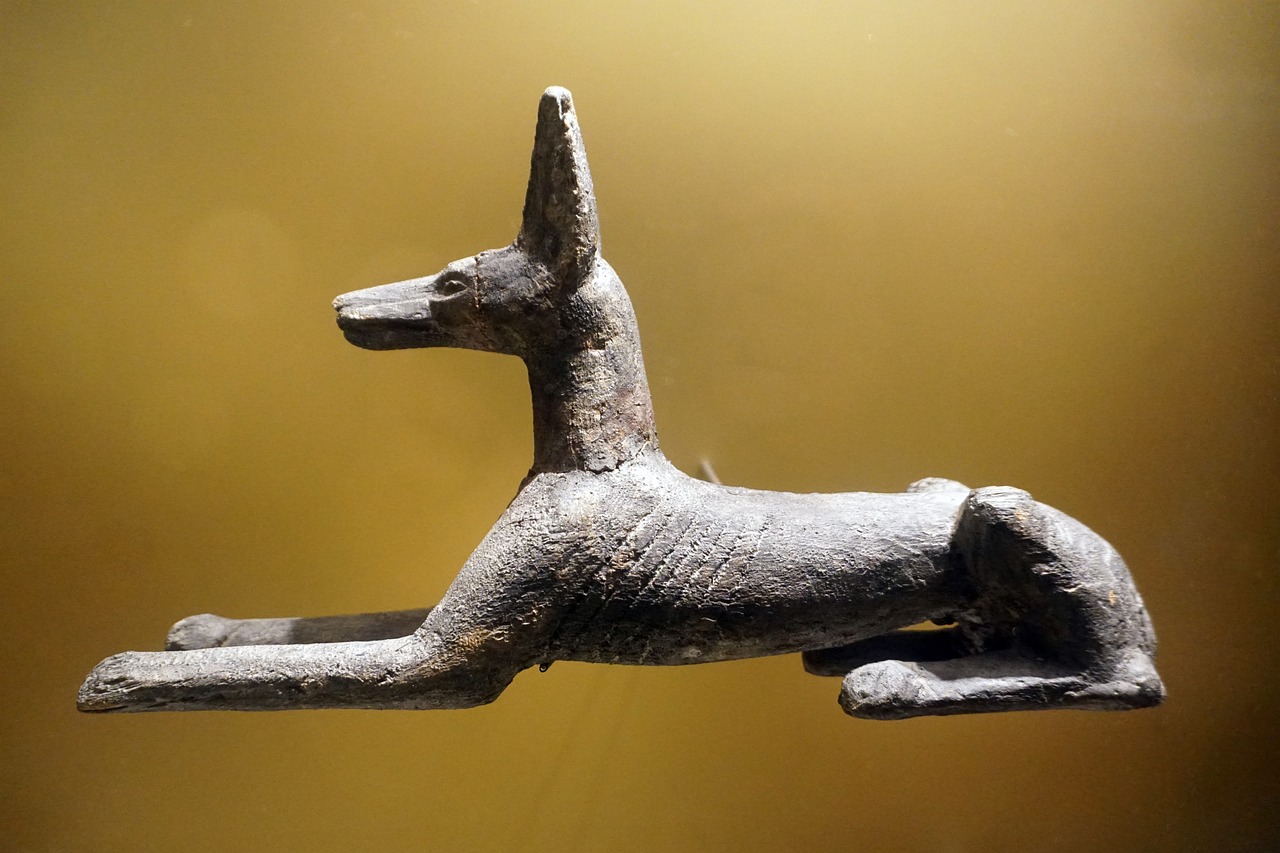Anubis: The Ancient Egyptian God of the Afterlife
Exploring the beliefs and lore surrounding Anubis, the deity connected with death, mummification, and the Underworld, opens a window into ancient Egyptian culture. Anubis, depicted as a man with the head of a jackal or dog, was regarded as the protector of souls entering the Underworld, known as Duat—a realm filled with significant dangers. He welcomed souls and safeguarded them as they ventured through the afterlife.
In the mythology of ancient Egypt, Anubis is said to be the offspring of Osiris, the god of the dead, and Nephthys. He played a critical role in the mummification process, ensuring the deceased were properly prepared for their journey through the afterlife. One of his most vital tasks was guiding the spirits of the dead to face judgment in the Underworld, particularly in the weighing of the heart ritual, which determined their eternal fate.
Anubis Profile and Key Facts
- Ancient Name: Anubis
- Role: God of the dead, overseeing tombs and embalming
- Domain: The Underworld (Duat)
- Symbols: Imiut fetish, flail, crook, ‘was’ scepter, jackal
- Alternate Names: Anpu, Imiut (Lord-of-the-Place-of-Embalming)
- Family: Son of Osiris and Nephthys; has a wife, Anput; children include Kebechet, goddess of purification, with Horus as his sibling.
Anubis’s image emphasizes a unique human-animal hybrid form commonly recognized among Egyptian deities. This representation was not a form of animal worship but a symbolic way to express various attributes of the gods. Symbols associated with Anubis, such as a black jackal head, are deeply rooted in ancient beliefs. Black symbolizes death and the Underworld but is also associated with rebirth due to the fertile soil of the Nile.
The Book of the Dead and Anubis
Anubis is prominently featured in the “Book of the Dead,” an essential papyrus scroll that served as a guide for the deceased, detailing their journey through the Underworld. The scroll was often created for individuals like Ani and his wife to help them navigate potential perils they might face. This guide included spells and invocations designed to ensure a safe passage through the afterlife.
During the critical ceremony in the Hall of Two Truths, the deceased’s heart was weighed against the feather of truth, overseen by Anubis. This judgment would determine their fate, deciding whether they earned a place in paradise or were consumed by the Devourer of the Dead.
Anubis’s Symbols and Fetishes
One of Anubis’s notable symbols is the Imiut fetish, believed to contain his magical essence and connect the earthly realm with the supernatural. This fetish typically appeared as a headless animal skin affixed to a pole ending in a lotus bud. In royal tombs, elaborate gold versions were created for pharaohs, signifying their connection with Anubis’s protective influence.
Additionally, Anubis wielded the flail, crook, and ‘was’ scepter—each symbolizing different aspects of his connection to the pharaohs and their divine authority. The flail represented the pharaoh’s role as sustainer of his people, while the crook depicted the pharaoh as a shepherd of his subjects. The ‘was’ scepter embodied divine power and authority.
The Legacy of Anubis
Anubis’s unique jackal head, although different from the brown of real jackals, holds significant cultural meaning. His connection with jackals derives from their natural behavior of dwelling near cemeteries, where they were often seen in locations where the dead were interred. Many tombs were designed to keep such scavengers away from the deceased.
Numerous statues of Anubis, often featuring only the jackal figure on a pedestal, reflect the reverence held for him, particularly noted in the exquisite items found in the tomb of Tutankhamun.
Through various stories and legends, Anubis remains a pivotal figure not only in the realm of the dead but also in the religious and cultural practices of ancient Egypt. These rich narratives contribute significantly to our understanding of ancient Egyptian beliefs and their complex relationship with life, death, and the afterlife.
In summary, Anubis is more than just a god of the dead; he embodies the ancient Egyptian understanding of life in death and the importance of proper burial rituals.



